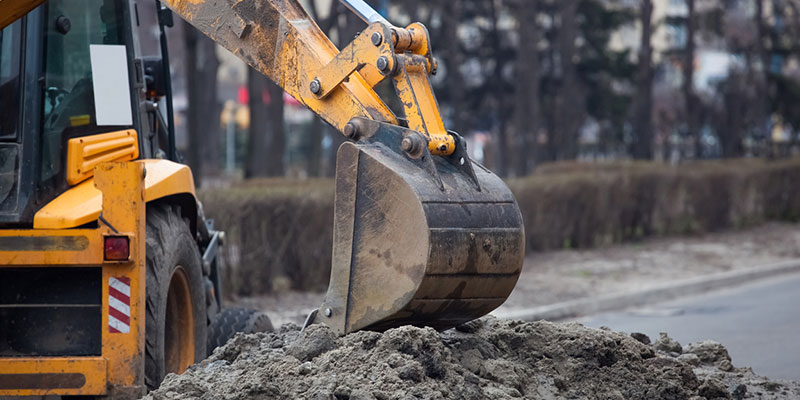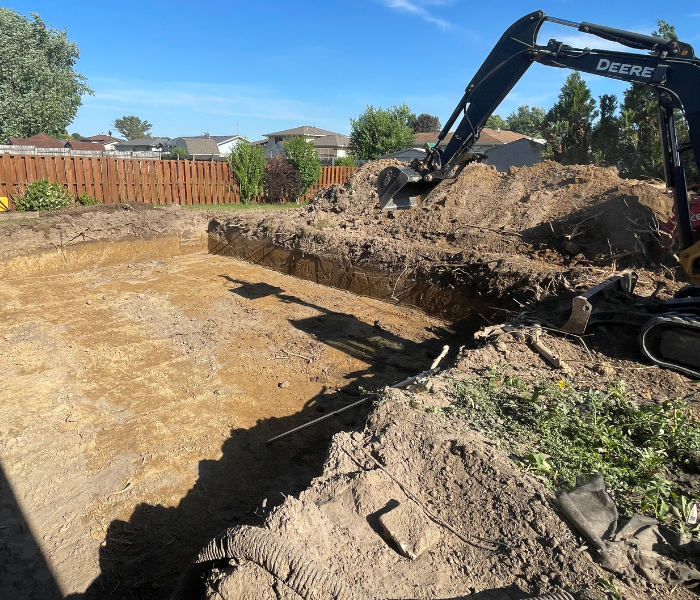Excavating Ohio - Leading Excavation Service Providers for Ohio Projects
Excavating Ohio - Leading Excavation Service Providers for Ohio Projects
Blog Article
Comprehensive Exploration: The Science Behind Superior Excavation Practices
The realm of excavation techniques is a domain name where scientific research links with workmanship to uncover the enigmas concealed below the planet's surface. From old hand devices to modern-day hydraulic excavators, the advancement of excavation methods has actually been a testimony to human ingenuity and technological improvements. What really establishes premium excavation techniques apart is a deep understanding of geological concepts, combined with the use of innovative devices and approaches. By checking out the science behind these practices, we can uncover the keys that exist underneath our feet and value the precision and experience that enter into every dig.
Advancement of Excavation Methods
Throughout history, the evolution of excavation techniques has actually played an important duty in progressing construction methods and historical discoveries. From the rudimentary tools made use of by our ancestors to the innovative machinery used in modern-day times, the progression of excavation approaches has dramatically transformed exactly how we come close to different tasks.
In ancient times, manual work with standard tools such as shovels, wheelbarrows, and pickaxes was the key method of excavation. This labor-intensive procedure limited the depth and extent of excavations, typically causing sluggish progression and restricted access to certain sites. As civilizations advanced, so did the strategies and tools made use of for excavation.
The Industrial Revolution noted a turning point in excavation practices with the introduction of steam-powered machinery. In contemporary times, technology plays a critical function in excavation, with innovations like General practitioner systems, drones, and 3D scanning boosting accuracy and effectiveness in the field.
Function of Innovation in Excavation

The assimilation of innovative innovation has essentially changed the area of excavation, improving precision and performance to unmatched levels. Among the crucial technological innovations that has actually considerably impacted excavation techniques is the application of GPS systems. These systems permit specific mapping of excavation websites, allowing drivers to precisely find underground energies and frameworks. Additionally, making use of telematics in excavation tools has enabled real-time surveillance of maker performance, resulting in aggressive maintenance and increased operational performance.
Moreover, the arrival of 3D modeling and simulation software has structured the preparation process for excavation jobs. Operators and engineers can now picture the entire excavation process before damaging ground, enhancing and determining prospective obstacles operations. In conjunction with this, the implementation of drones in excavation activities has actually helped with aerial studies, volumetric measurements, and site evaluations with unparalleled rate and precision.
Geological Principles in Excavation
An understanding of geological concepts is vital for guaranteeing the architectural stability and stability of excavation sites. Geological factors play a vital function in determining the feasibility and safety of excavation jobs (excavating ohio). One vital geological principle to consider is the kind of soil or rock present at the website. Different dirt types, such as sand, crushed rock, or clay, have differing levels of security and need different excavation techniques. Cohesive soils like clay might need additional assistance to prevent collapses, while sandy soils might be prone to erosion throughout excavation.
By conducting comprehensive geological studies and analysis, designers and excavators can create techniques to alleviate threats and ensure the successful completion of excavation projects. Eventually, incorporating geological principles right into excavation methods is vital for accomplishing secure, effective, and lasting results.

Most Current Devices for Excavation
In the realm of excavation techniques, contemporary innovations in devices have read the article actually revolutionized the performance and precision of excavation processes. These drones can provide in-depth aerial studies of excavation sites, offering real-time data on topography and prospective risks.
Another cutting-edge tool gaining appeal is the implementation of 3D printing technology for developing custom-made excavation tools. This enables the production of specialized tools that are customized to the details demands of a job, increasing effectiveness and lowering downtime.
Moreover, innovations in products science have brought about the development of stronger and a lot more durable excavation tools. septic ohio. Tungsten carbide-tipped excavator attachments, for instance, deal superior performance in difficult ground conditions, boosting efficiency on-site
Scientific research's Effect on Excavation Practices

Furthermore, developments in products science have resulted in the development of more powerful, extra durable excavation devices and equipment. The use of composite products in shovels and miners has improved their performance and longevity, inevitably boosting efficiency on excavation sites. In addition, clinical research study on dirt auto mechanics and geotechnical design has provided useful understandings into soil habits, allowing excavation experts to make informed decisions pertaining to excavation methods and dirt stabilization methods. Overall, scientific research proceeds to drive technology and renovation in excavation techniques, making excavation projects a lot more reliable, cost-efficient, and sustainable.

Verdict
In verdict, the development of excavation methods has been greatly influenced by advancements in modern technology and a much deeper understanding of geological principles. The latest devices and tools utilized in excavation have actually boosted effectiveness and accuracy in the field. The application of clinical expertise has actually considerably improved excavation techniques, leading to a lot more efficient and sustainable approaches for digging deep into various sorts of products.
In explanation the realm of excavation techniques, modern developments in devices have actually reinvented the efficiency and precision of excavation processes. By leveraging scientific principles, the excavation market has been able to dramatically improve efficiency, precision, and safety and security in excavation processes. GPR permits excavation groups to non-invasively check and map subsurface frameworks, energies, and potential risks, allowing them to intend excavation tasks with better accuracy and lowered danger of mishaps.
Additionally, clinical research on dirt mechanics and geotechnical design has supplied important look at this site understandings right into soil behavior, allowing excavation specialists to make enlightened choices relating to excavation approaches and dirt stabilization techniques. On the whole, science continues to drive development and renovation in excavation methods, making excavation tasks a lot more effective, economical, and sustainable.
Report this page